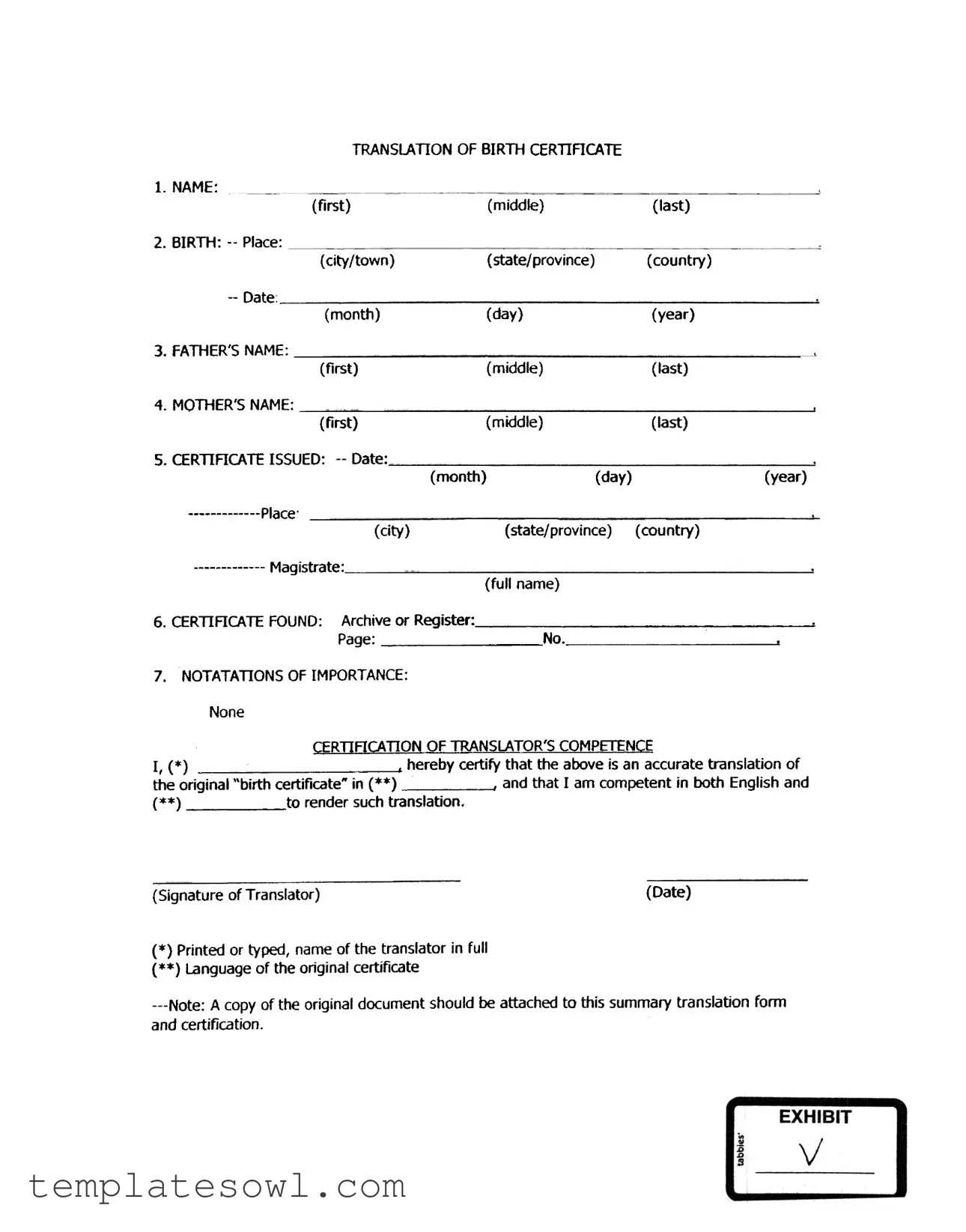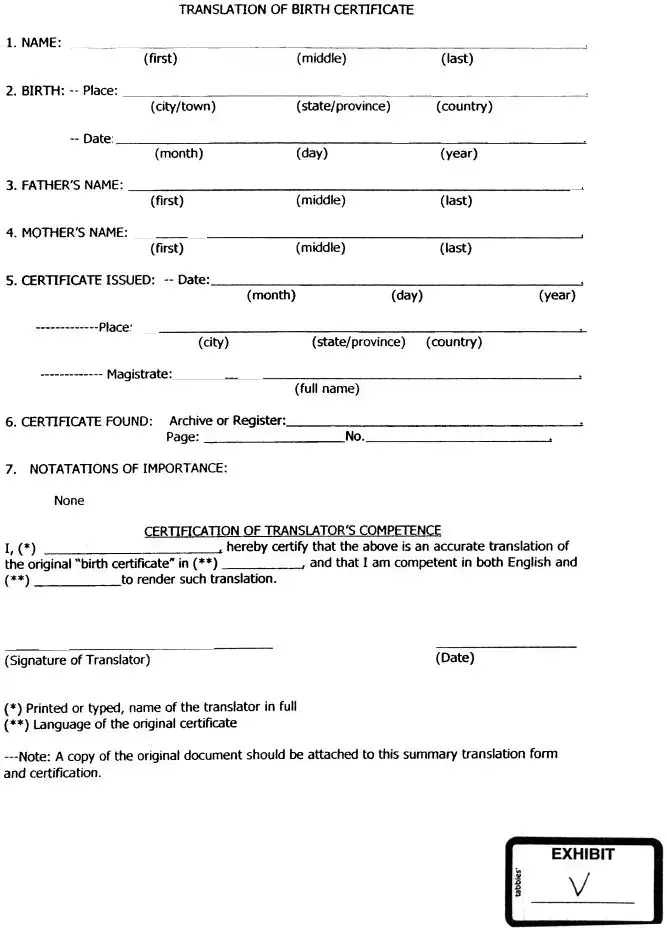Filling out a birth certificate form is a crucial task that requires attention to detail. Many individuals encounter common mistakes that can lead to confusion or delays in processing. Understanding these pitfalls can help ensure a smoother experience.
One frequent error is incorrectly spelling names. Parents often rush when entering their child's name. Double-checking spelling, especially for first, middle, and last names, is vital. A minor typo might lead to complications in future documents.
Another mistake concerns the birthplace. Individuals sometimes provide incomplete information regarding the city, state, or country of birth. It’s important to include all three elements accurately, as any missing data could delay the official registration of the birth.
Dates must be entered correctly, yet many mixed up the format. For example, writing the month before the day is a common practice in some regions but not in others. Be cautious about the order to avoid mistakes on the birth date.
Parents sometimes overlook the father's and mother’s names. It is essential to provide both parents' full names in the designated sections. Omitting one parent can lead to errors in the child’s legal documentation.
In some cases, individuals forget to include the date and place of the certificate issuance. This information is crucial and needs careful attention. Without it, the certificate may not be considered complete.
Errors in the certification of the translator's competence section can also occur. If translating a birth certificate, the translator's name must be accurately filled out alongside their signature and date. An incomplete certification could invalidate the translation.
Another mistake is failing to attach the necessary documents. Applicants sometimes neglect to provide a copy of the original birth certificate. This is a required step that if missed, can disrupt the entire process.
Checklist omissions can be detrimental as well. Individuals often rely on memory to ensure that all sections of the form are complete. Utilizing a checklist before submission can help prevent forgetting to fill out any important parts.
Lastly, signatures are frequently a source of confusion. The form must be signed by the appropriate parties, and many forget this crucial step. Ensure that all required individuals have added their signatures before submitting the form.
Avoiding these common mistakes is essential for anyone completing a birth certificate form. By paying careful attention to detail, individuals can save time and ensure that their documentation is accurate and accepted.

